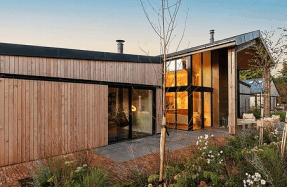30 years of INNOVATIONS

This 30th anniversary edition of Homebuilding & Renovating has been pieced together in the midst of a global pandemic, the enormity of which arguably overshadows every other world event that has happened during the existence of our magazine. In the six months we have lived with Covid-19 many things have changed, but the construction sector seems, for the moment, to be relatively unaffected. Builders merchants’ are back open for business, supplies have been delayed but are getting through and, crucially, people are still happy to invest their time and money in housing. Indeed, self-build and renovation may get a boost from all this in the long-term, as the general trend towards home working and away from commuting has been accelerated. Never has the countryside looked so attractive.
Yet even leaving current events aside, it cannot be denied that the changes over the last 30 years have been quite remarkable.
IN THE BEGINNING…
Back in 1990 ‘self-build’ was a newly coined word, but it described an ages-old phenomenon: families constructing their own homes. It’s pretty much how human civilisation started. So to understand why self-build exists as a separate entity to the rest of the building process, you have to understand what took its place, which was speculative housebuilding undertaken by professionals for profit. This began in Georgian times, accelerated through the 19th and 20th centuries, and by 1990 was delivering the vast bulk of our newly built homes. Speculative housing tends to be cheaply done, and unimaginative — it has to appeal to a broad spectrum of potential customers, so is devoid of anything quirky or individualistic.
Despite this, there was actually quite a lot of self-build going on back in the years leading up to 1990. Land was relatively cheap then, and individual plots regularly came onto the market, encouraging families with modest incomes to get stuck in. There was also a fair amount of community self-build undertaken under the wing of companies such as Wadsworths, who bought parcels of land and
You’re reading a preview, subscribe to read more.
Start your free 30 days





